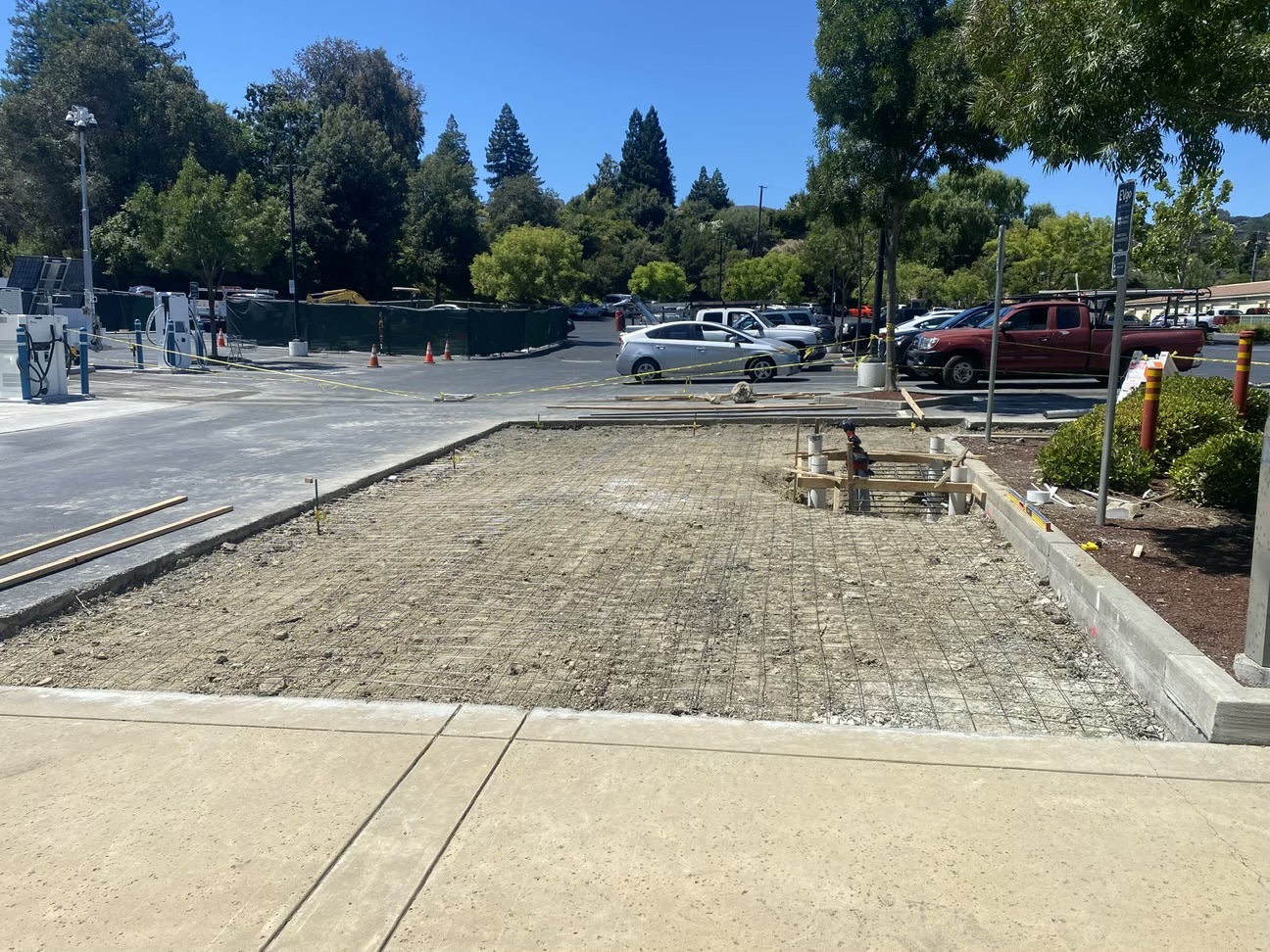Today, we’re going to be working with National Renewable Energy Laboratory (NREL) EVI-Locate tool to figure out the cost of installing chargers. I’ll be walking you through an exercise on how to figure out what you need. From what vehicle to deciding if a level 2 charger or DC fast charging is right for this specific use case.
For this exercise, I’m going to use a carpet cleaning business located in Iowa. There are currently 10 vehicles we’d like to transition to EV. First, we have to figure out what vehicles we need.
Vehicles
There are lots of electric vehicles to choose from. How do you know which one is right for you? While there are many things to think about, the main thing to focus on is how you use those vehicles.
That means what is your daily route and also what do you need the vehicle to do.
Route
For the carpet cleaning business, our service area is a 30 mile radius from our store. The longest route would be 60 miles round trip.
I need a vehicle that will give me at least a 60 mile range. But I don’t plan on depleting the battery fully, I want at least 20% wiggle room. So I actually need a vehicle that will give me at least a 72 mile range or higher.
I can go to CommercialEVs.com and search for vehicles with a range of 72 miles or more. Then I can look at which vehicles in that range fit my business needs.
Vehicle Needs
A carpet business carries a lot of carpet cleaning equipment. So I need a vehicle that can store everything and is easy to remove items from.
Vehicle Choice
For my needs, the best vehicle is the Ford E-Transit. It has a range of 159 miles, which is much higher than the minimum 72 mile range needed. It’s a box van, so it will make storing and unloading carpet cleaning equipment easy.
Chargers
Next we need to figure out what charger we need. For this we’ll look at the dwell time.
Dwell Time
We run during normal business hours and the vehicles sit in our commercial lot over night. They sit for 10+ hours and so I can use a low kW level 2 charger.
Charger Choice
To save on costs I’m going to choose a lower kW charger. The Chargepoint CPF50 is a Level 2 11 kW charger. It will take approximately 6.5 hours to charge the battery from 20% to full charge. Since the vehicle sits over 10 hours, this charging time is no issue.
Estimating Costs
Now, let’s use the NREL EVI-Locate tool to estimate some costs to install infrastructure. First, it will ask to define the site. You can insert in your address and it will use a satellite view to define the site.
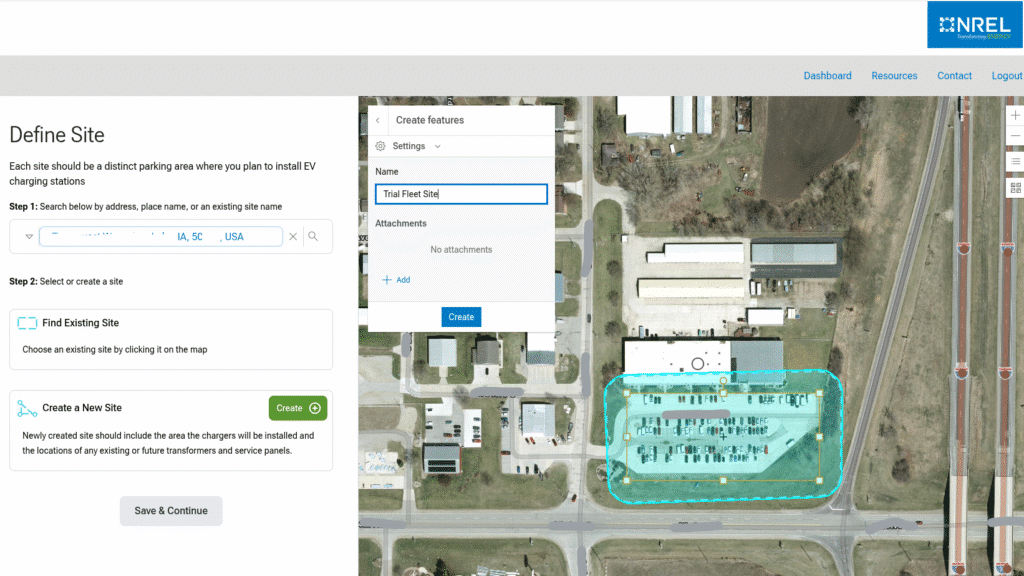
Next, you’ll choose what type of chargers. It’s all generic, but we know we want level 2 dual port chargers.
Dual port means 2 chargers on one pedestal, which means each pedestal can charge 2 vehicles. Installing dual port chargers instead of single port chargers means there is less infrastructure to install.
I need 10 total chargers, but by installing dual port, I only need to install 5 charging pedestals.
Next, it will have you add the EV chargers to your site. There’s a lot to think about when picking the right location for chargers. But this is just a cost modeling tool and not to be used as the actual design plan. That will be done by an engineering and design firm.
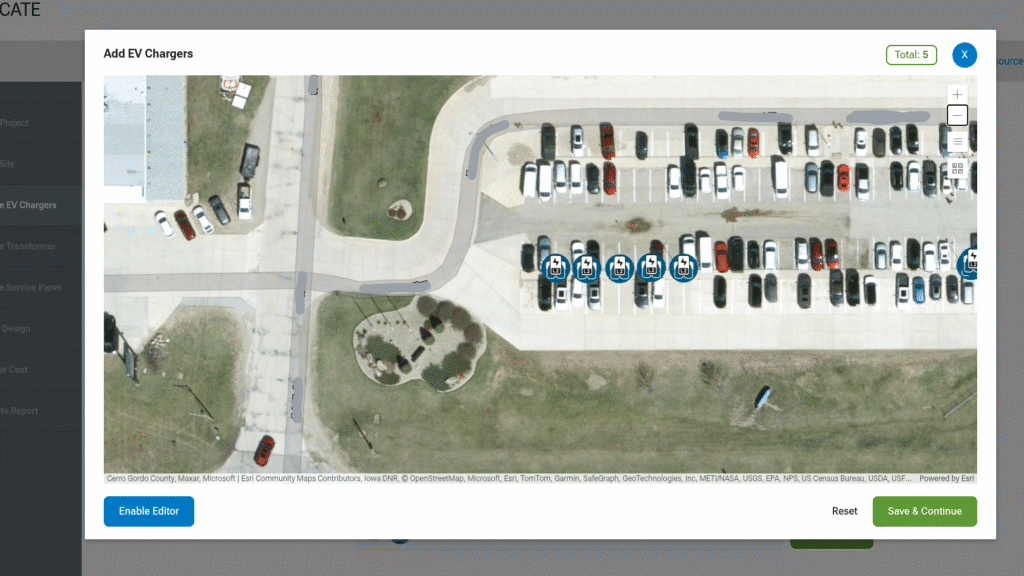
So put the chargers wherever you think you want them, knowing that location could change in the future.
Then the NREL EVI-Locate tool will ask if you need a 208v transformer and a service panel. To give a full picture of what might be needed, I said yes.
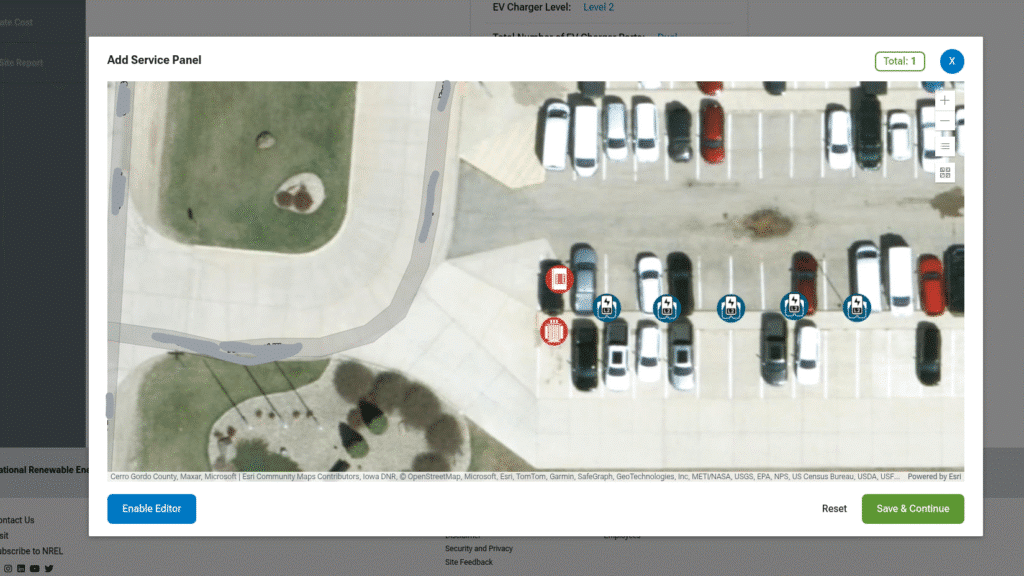
The chargers are being installed on the edge of the parking lot, away from the building. It wouldn’t make sense to trench that full way, so a new service would be better.
Then the tool will generate electric lines. And then start estimating costs.
It will give you a breakdown of costs, including the charger costs. It will give you the breakdown in categories and in individual costs.
This donut chart breaks down the costs of different areas of the installation. This helps to see a full picture of what costs are associated with the project.
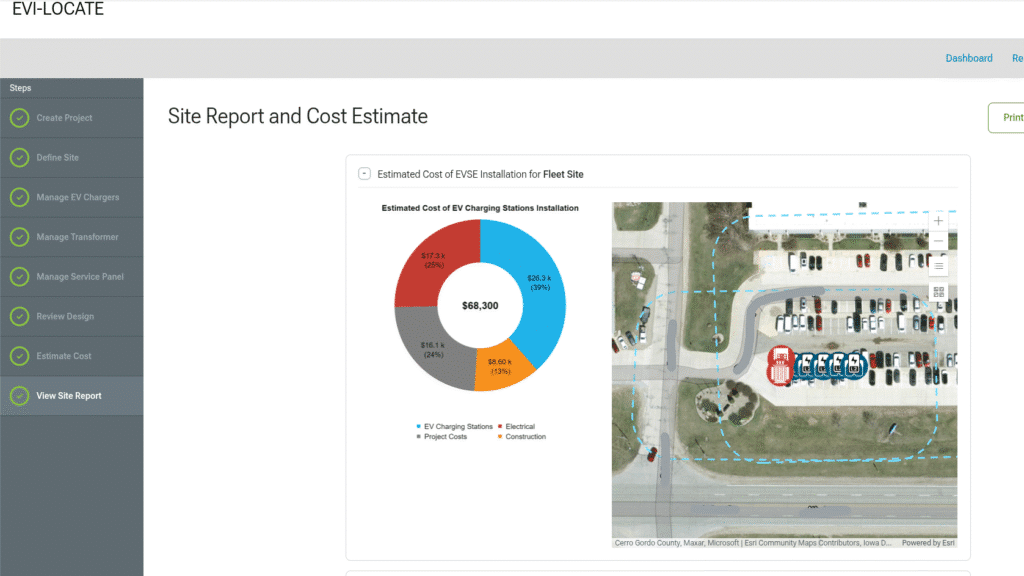
The bar chart breaks it down even further, looking at specific costs of certain materials.

Then there’s the written costs. It breaks down each item for the project, how many of each will be needed, and also shows the cost associated with each item.
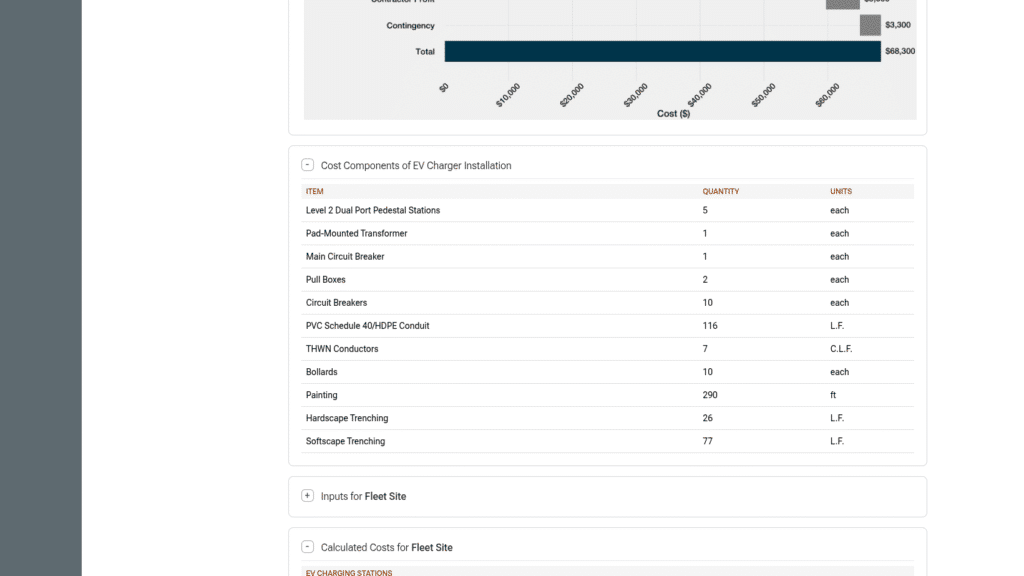

Recap
All in, this project will cost $68,300 to install. That should include the price of the chargers. Hopefully this gives you a good picture of how to use this tool for your own fleet. As always, let us know if you have any questions. We’re happy to help!

